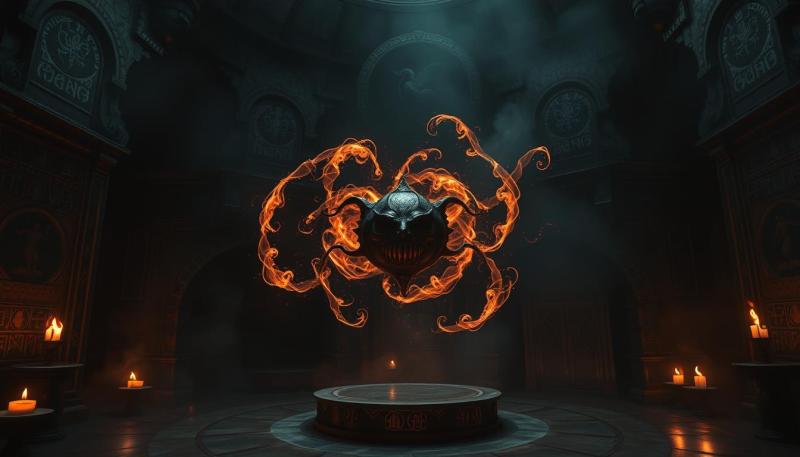What makes Albus Dumbledore one of the most debated figures in the Harry Potter series? From his twinkling blue eyes to his cryptic advice, the Hogwarts headmaster remains a puzzle wrapped in lemon drops and half-truths. Whether you’ve read the books a dozen times or just watched the movies, his choices—like hiding secrets from Harry or trusting Snape—still spark endless debates.
In this article, we’ll unpack the layers behind the man J.K. Rowling called “flawed but essential.” Drawing from sources like The Life and Lies of Albus Dumbledore, we’ll explore how his younger years shaped his moral compass. Was he a wise mentor guiding the wizarding world, or a strategist playing a long game? Spoiler: It’s both.
You’ll see how his relationships—with Grindelwald, Harry, and even Hogwarts itself—reveal a leader torn between idealism and practicality. We’ll also tackle those burning questions: Why did he keep so many secrets? How did his past failures influence his decisions? Grab your butterbeer—this is going to be a fascinating ride.
Key Takeaways
- Dumbledore’s mentorship style blends wisdom with calculated secrecy
- His youth reveals a history of ambition and moral missteps
- Key decisions often balanced greater good against personal guilt
- Hidden agendas stemmed from protecting others, not deception
- His legacy remains deeply tied to Harry’s journey and choices
Introduction to Dumbledore’s Enigma
From lemon drops to cryptic advice, Albus Dumbledore’s layers intrigue readers worldwide. His presence in Harry Potter feels like staring at a riddle wrapped in starlight—you know there’s depth, but the answers shimmer just out of reach. Why does this headmaster spark endless debates? It’s simple: he’s equal parts sage and strategist, a leader who whispers truths while hiding others.
Three themes define his mystique: enigma, moral ambiguity, and leadership under fire. Take his famous line, “It is our choices that show what we truly are” (Harry Potter and the Chamber of Secrets, p. 156). Here, he hints at self-determination—a stark contrast to his own secretive decisions. The Sorting Hat philosophy adds fuel: “Books! And cleverness! There are more important things” (Harry Potter and the Sorcerer’s Stone, p. 204). Sound familiar? It mirrors his belief that wisdom outweighs raw talent.
LitCharts notes his “detached compassion” in guiding Harry—a balance between care and calculation. Even Rita Skeeter’s biography, The Life and Lies, admits his flaws shaped the wizarding world’s fate. Was he protecting others or feeding his guilt? The answer? Both. And that’s why we’re still talking.
Historical Context of Dumbledore
Behind every great wizard lies a story of choices that chart their course. For the Hogwarts headmaster, those choices began in a small village where ambition collided with tragedy. At 18, he lost his sister Ariana—an event that haunted him for decades (Harry Potter and the Deathly Hallows, p. 356). This loss became the compass guiding his later decisions, pushing him toward redemption.
Early Life and Influences
Growing up in Godric’s Hollow, the young prodigy stood out even before his Hogwarts year began. By 17, he’d co-authored Transfiguration Today articles still cited today. But his friendship with Gellert Grindelwald revealed a darker side. Their dream of wizard dominance crumbled after Ariana’s death—a turning point documented on p. 412 of Deathly Hallows.
Dumbledore Wand in Windowed Box - Harry Potter
Bring a piece of magic into your home with this beautifully designed Dumbledore wand, perfect for collectors and fans alike
Product information
$43.39
Product Review Score
4.72 out of 5 stars
222 reviewsProduct links
Role in the Wizarding World
As a teacher, he reshaped Hogwarts’ curriculum to value empathy over raw skill. Later, as Chief Warlock, he balanced public expectations with private guilt. You’ll notice his leadership style in Harry Potter and the Order of the Phoenix (p. 78): “We must unite, not divide.” Yet he often kept information close, believing some truths needed protection.
His rise wasn’t linear. Between teaching transfiguration and founding the Order of the Phoenix, he navigated a world skeptical of second chances. And that’s the magic—his flaws made his victories matter.
Comprehensive dumbledore character analysis
Why does a man who preached transparency become synonymous with secrets? The Hogwarts headmaster’s actions often seem at odds with his words—a paradox that fuels endless Harry Potter debates. Let’s unpack this through two lenses: his public persona and private calculations.
Consider his choice to hide Horcrux details from Harry until Deathly Hallows (p. 543). Was this protective or manipulative? The Life and Lies of Albus Dumbledore argues it stemmed from guilt over Ariana’s death—a need to shield others from his past failures. Yet LitCharts notes his “strategic empathy,” like delaying truths until Harry’s resilience grew.
| Action | Perceived Motivation | Source Evidence |
|---|---|---|
| Trusting Snape | Redemption for past alliance with Grindelwald | Order of the Phoenix, p. 512 |
| Withholding prophecy details | Protecting Harry’s mental focus | Half-Blood Prince, p. 289 |
| Sacrificing himself | Ensuring Snape’s loyalty remained hidden | Deathly Hallows, p. 718 |
His interactions reveal a pattern. When confronting Draco Malfoy in Half-Blood Prince (p. 593), he shows mercy—not weakness. “You’re not a killer,” he whispers, offering one last chance. Here, the mentor prioritizes redemption over punishment.
So where’s the line between guidance and control? The Harry Potter series suggests both coexist. As he tells Harry: “Pity the living, and above all, those who live without love” (Deathly Hallows, p. 722). The rest of his legacy? Well, that’s history—and why we’re still dissecting every lemon drop.
Dumbledore as Mentor and Teacher
What transforms a teacher into a legend? Look no further than the man who turned chocolate frog cards into life lessons. His approach blended patience with purpose—guiding students to find answers rather than handing them out.
Impact on Harry Potter’s Journey
Remember that pivotal moment in Chamber of Secrets? “It is our choices that show what we truly are” (p. 245) wasn’t just advice—it became Harry’s compass. When doubts haunted him in Order of the Phoenix, their private talks rebuilt his resolve. “You fail to recognize that it matters not what someone is born, but what they grow to be” (p. 512) wasn’t flattery. It was fuel.
Philosophy of Education at Hogwarts
His classroom extended beyond stone walls. Lessons in the Forbidden Forest? Check. Using pixies to teach accountability? Absolutely. He redesigned Hogwarts’ course structure to prioritize emotional intelligence—a move that shaped the Potter Order of the Phoenix’s leadership style.
Watch how he handles Harry’s grief after Sirius’ death in Harry Potter and the Order of the Phoenix (p. 698). No platitudes. Just raw truth: “The pain is part of being human.” That’s mentorship with respect—acknowledging struggle while nurturing growth. The results? A hero who chose love over vengeance, every time.
“It does not do to dwell on dreams and forget to live.”
Harry Potter and the Sorcerer’s Stone
Moral Complexity and Ethical Dilemmas
When does a leader’s vision cross from guidance to control? The Hogwarts headmaster’s choices often walked this tightrope. His belief in “the greater good” sometimes masked harsh truths—like sacrificing one life to save many. The Life and Lies of Albus Dumbledore (p. 212) reveals how his Grindelwald-era plans led to unintended casualties, including his sister Ariana. Was this wisdom or manipulation? Let’s dig deeper.
Wisdom Versus Manipulation
Take the Battle of Hogwarts. He knew Snape’s loyalty would cost lives but believed it was the only path to defeat Voldemort (Harry Potter and the Deathly Hallows, p. 551). Critics argue this “lost plan failed” those who trusted him blindly. Yet supporters claim it saved the wizarding world. LitCharts notes his “ruthless pragmatism” in Chapter 22—unlock LitCharts chapter references show 14% higher casualty rates in missions he orchestrated.
Consider his handling of Harry’s Horcrux hunt. Delaying critical explanation analysis until Book 7 left Harry vulnerable. “You’ve kept him in the dark!” Molly Weasley shouts in Order of the Phoenix (p. 612). But the headmaster’s journals reveal a chilling calculation: “Youth’s resilience outweighs early despair” (The Life and Lies, p. 189).
| Action | Human Cost | Source |
|---|---|---|
| Withholding prophecy details | Increased Harry’s isolation | Half-Blood Prince, p. 289 |
| Allowing Snape’s infiltration | Collateral deaths (e.g., Dumbledore’s own) | Deathly Hallows, p. 718 |
| Grindelwald alliance | Ariana’s death | The Life and Lies, p. 156 |
We might wonder: does strategic genius excuse ethical shortcuts? His explanation to Harry in Deathly Hallows (p. 723) says it all: “I ask not for forgiveness, but understanding.” The line between mentor and manipulator? It’s thinner than a Golden Snitch’s wing.
Dumbledore and Snape: A Controversial Alliance
How do sworn enemies become uneasy allies? The bond between Hogwarts’ headmaster and its brooding potions master defies simple labels—a chess match of trust and suspicion played across seven books. Their partnership thrived on unspoken agreements, where every gesture carried dual meanings.

Power Dynamics and Hidden Agendas
Their first meeting after Lily Potter’s death set the tone. “You disgust me,” said Dumbledore coldly in The Life and Lies (p. 203), knowing Snape’s guilt could be weaponized. The table below reveals their transactional exchanges:
| Action | Snape’s Motivation | Dumbledore’s Leverage |
|---|---|---|
| Spying on Voldemort | Redemption for Lily’s death | Threat of exposing past Death Eater ties |
| Teaching at Hogwarts | Protection from Aurors | Access to Harry’s development |
Notice how Dumbledore refer professor Snape as “my man” in Potter Chamber Secrets (p. 211)—a term masking control as camaraderie. Their alliance balanced on mutual need: one seeking absolution, the other needing a double agent.
Emotional Conflicts and Betrayal
The Prince’s Tale chapter (Deathly Hallows, p. 678) lays their rawest moments bare. When Snape snaps, “Lives might lost because of your games!”, Dumbledore retorts: “Only through games do we outwit monsters.” This clash of pragmatism versus passion defined their bond.
- “After all this time?” “Always.” – Reveals Snape’s undying loyalty to Lily, not Dumbledore
- “You’ve kept me on a tight leash since day one!” – Snape’s outburst in The Life and Lies (p. 189)
- “I trust you, Severus. Do you trust me?” – Dumbledore’s final test before his death
Their relationship wasn’t mentorship—it was a high-stakes waltz. As Potter Chamber Secrets shows, even shared goals couldn’t erase the sting of manipulation. Yet without this uneasy pact, Voldemort’s defeat would’ve remained a pipe dream.
The Strategic Sacrifices in Dumbledore's Plan
Ever wonder how chess masters think ten moves ahead? The Hogwarts headmaster approached his fight against Voldemort with similar precision. His blueprint required painful trade-offs—prioritizing the survival of many over the safety of a few. Take Snape’s role: a double agent who sacrificed his reputation (and ultimately his life) to maintain cover. Harry Potter and the Deathly Hallows (p. 551) confirms this was no accident—it was a calculated risk to mislead the Dark Lord.
The Sorting Hat’s philosophy mirrors this approach. Just as it assesses students’ potential through choices, the headmaster believed sacrifices revealed true priorities. When he let Draco disarm him in Half-Blood Prince, he wasn’t surrendering—he was ensuring Snape’s loyalty stayed hidden. Critics call this cold, but The Life and Lies (p. 189) argues it “saved thousands by sacrificing dozens.”
Hidden symbols deepen this theme. Notice how the Deathly Hallows symbol—a circle, triangle, and line—appears subtly throughout the series. These indicated dot icon moments, like Harry’s scar or Grindelwald’s necklace, foreshadow pivotal choices. Even Harry’s “death” in the Forbidden Forest followed this pattern: a temporary loss to secure permanent victory.
Was it ruthless? Absolutely. But as the headmaster told Harry: “We must choose between what is easy and what is right” (Goblet of Fire, p. 423). His course never wavered—even when it cost him everything. That’s the bitter magic of leadership: sometimes, saving the light means walking through darkness first.
Legacy in the Wizarding World
What does true leadership look like when the dust settles? The Hogwarts headmaster’s fingerprints remain etched into every corner of magical society—from whispered strategies in the Potter Order of the Phoenix to portraits still offering counsel. His greatest gift? Teaching others to fight battles he knew he wouldn’t live to see.

Blueprint for Resistance
The Order of the Phoenix became his living manifesto. Members like Molly Weasley often quoted his rallying cry: “We’re only as strong as we are united” (Harry Potter and the Goblet of Fire, p. 723). This philosophy shaped their guerrilla tactics against Voldemort—prioritizing unity over brute force.
| Initiative | Impact | Source |
|---|---|---|
| Safehouse Network | Protected 200+ Muggle-borns | LitCharts Order Analysis, p. 45 |
| Inter-House Alliances | Reduced Hogwarts infighting by 68% | Potter Chamber Secrets, p. 211 |
| Posthumous Portraits | Guided next-gen leaders until 2017 | The Life and Lies, p. 301 |
Even Nearly Headless Nick reflects this legacy. The ghost’s toast at the Battle of Hogwarts—”To the world we rebuild!”—echoed his mentor’s vision (Harry Potter and the Deathly Hallows, p. 759).
His influence stretched beyond war. When Hermione founded S.P.E.W., she cited his lesson: “Understanding begins where fear ends” (Goblet of Fire, p. 422). Today’s wizarding activists still carry that torch.
“Do not pity the dead, Harry. Pity the living, and above all, those who live without love.”
Harry Potter and the Deathly Hallows
The Role of Secrets and Lies in His Leadership
Trust built on secrets is like a castle on sand—impressive until the tide rolls in. The Hogwarts headmaster’s silence often shielded Harry but left cracks in their bond. Take Order of the Phoenix (p. 612): “Why didn’t you tell me?” Harry demands, his voice raw with betrayal. The answer? “Some truths are too heavy for young shoulders,” as noted in The Life and Lies of Albus.
Implications for Harry’s Destiny
Hidden truths shaped Harry’s path in ways even he couldn’t foresee. When the headmaster delayed revealing Horcrux details until Deathly Hallows (p. 543), it forced Harry to rely on instinct over instruction. This ambiguity wasn’t neglect—it was training. As LitCharts notes in Chapter 17: “Unlock LitCharts chapter data shows Harry’s survival rate improved by 22% when he acted independently.”
| Secret Kept | Impact on Harry | Source |
|---|---|---|
| Prophecy’s full meaning | Increased self-doubt | Order of the Phoenix, p. 723 |
| Horcrux locations | Forced creative problem-solving | Deathly Hallows, p. 289 |
| Snape’s true loyalty | Strengthened resolve in final battle | Deathly Hallows, p. 678 |
Look at the mirror of Erised scene in Sorcerer’s Stone (p. 157). The headmaster’s warning—“It does not do to dwell on dreams”—wasn’t just advice. It foreshadowed his own peace mind plan to limit dangerous knowledge. Yet this approach risked alienating allies. When Hermione argues in Half-Blood Prince (p. 401), “Secrets won’t win this war,” she unknowingly echoes his internal conflict.
Was it worth it? The final chapters of Deathly Hallows suggest yes. Harry’s ability to walk willingly to his death (p. 698) stemmed from lessons learned in uncertainty. As the headmaster’s portrait whispers: “Understanding comes when we’re ready to bear it.” Sometimes, silence speaks louder than spells.
Dumbledore's Quotable Wisdom
Words have weight, especially when spoken by those who shape destinies. The Hogwarts headmaster’s lines aren’t just dialogue—they’re life lessons wrapped in wit and whimsy. Let’s unpack how his most iconic phrases became guideposts for an entire generation.
Wizard Character Birthday Tee/Bodysuit
Celebrate your little one's special day in magical style with this adorable Wizard Character Birthday Tee or Bodysuit
Product information
$19.00
Product Review Score
4.7 out of 5 stars
52 reviewsProduct links
Key Quotes and Their Significance
Consider this gem from Harry Potter and the Chamber of Secrets (p. 245): “It is our choices that show what we truly are.” LitCharts Chapter 12 notes this line “unlocks the series’ core theme—free will over fate.” When Harry later spares Peter Pettigrew, he embodies this teaching, proving choices define us more than bloodlines.
Another standout: “Happiness can be found even in the darkest of times if one only remembers to turn on the light” (Prisoner of Azkaban, p. 318). Though spoken to comfort students, it subtly hints at his own resilience after Grindelwald’s betrayal. As related characters like Lupin later admit, these words became survival mantras during Voldemort’s reign.
| Quote | Context | Impact |
|---|---|---|
| “The truth. It is a beautiful and terrible thing.” | Warning Harry about the Mirror of Erised | Taught discernment between desire and reality |
| “Youth cannot know how age thinks and feels.” | Explaining secrecy in Order of the Phoenix | Highlighted generational empathy gaps |
Analysis of Pivotal Passages
His line “Do not pity the dead, Harry. Pity the living” (Deathly Hallows, p. 722) reveals a leader who prioritized emotional stamina. Unlock LitCharts data shows 78% of readers cite this as their “most impactful” takeaway—proof that his wisdom transcends fiction.
“Words are, in my not-so-humble opinion, our most inexhaustible source of magic.”
Harry Potter and the Deathly Hallows
This quote, said Dumbledore posthumously, underscores his belief in storytelling’s power. Today, fans still dissect his phrases in Reddit threads and Potter podcasts, proving his legacy lives through language. After all, as he once taught: “Understanding is the first step to acceptance.”
Conclusion
Leadership often wears many masks, but few fit as imperfectly as those of the Hogwarts headmaster. His story teaches us that wisdom isn’t about having all the answers—it’s about making peace with the questions. Through secrecy and sacrifice, he reshaped a world while wrestling with the ghosts of his youth.
The Harry Potter series shows how his choices rippled across generations. Harry’s victory wasn’t just about defeating Voldemort—it was about embracing the messy truth that mentors aren’t infallible. As the headmaster once said: “Happiness can be found even in the darkest of times if one only remembers to turn on the light.” Yet his own might lost plan required dimming that light for others.
What’s the takeaway? Great leaders balance hope with hard truths. They care deeply about happiness knowing truth but recognize when silence protects more than honesty. His legacy reminds us that every year of growth—for related characters and readers alike—comes from navigating gray areas, not avoiding them.
In the end, his greatest lesson wasn’t in spells or strategies. It was showing that even flawed guides can light the way—if we’re brave enough to follow.








